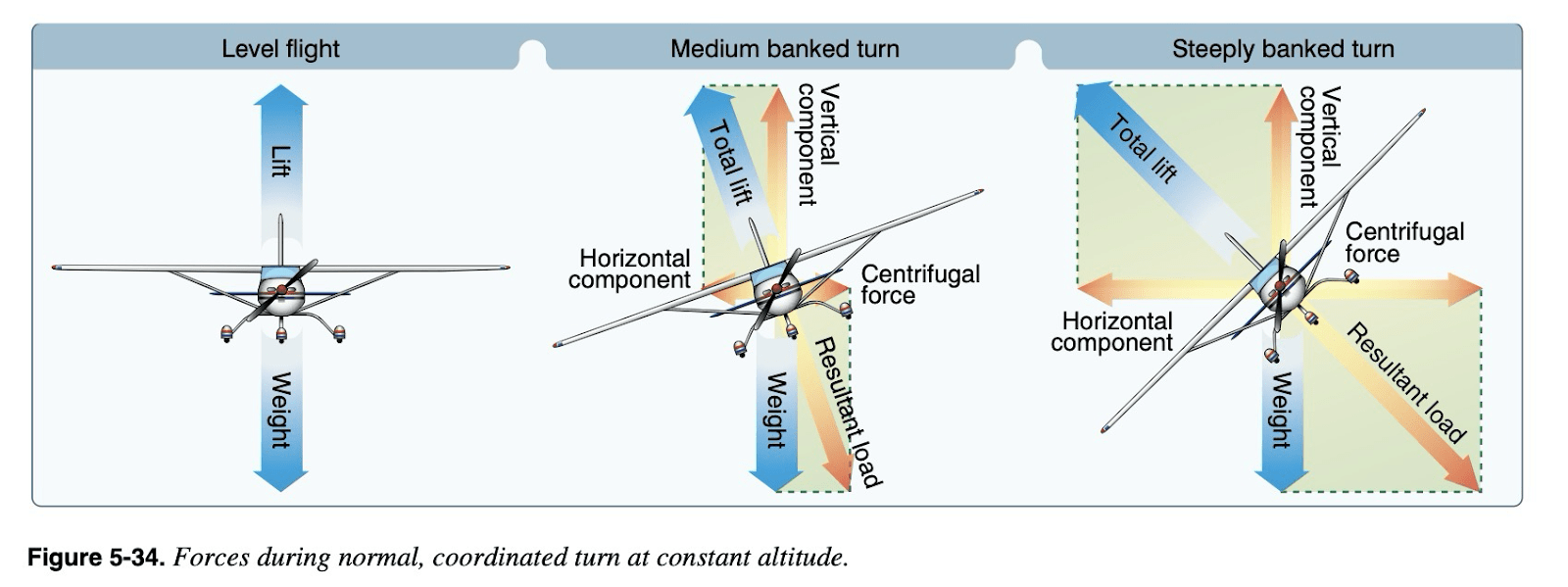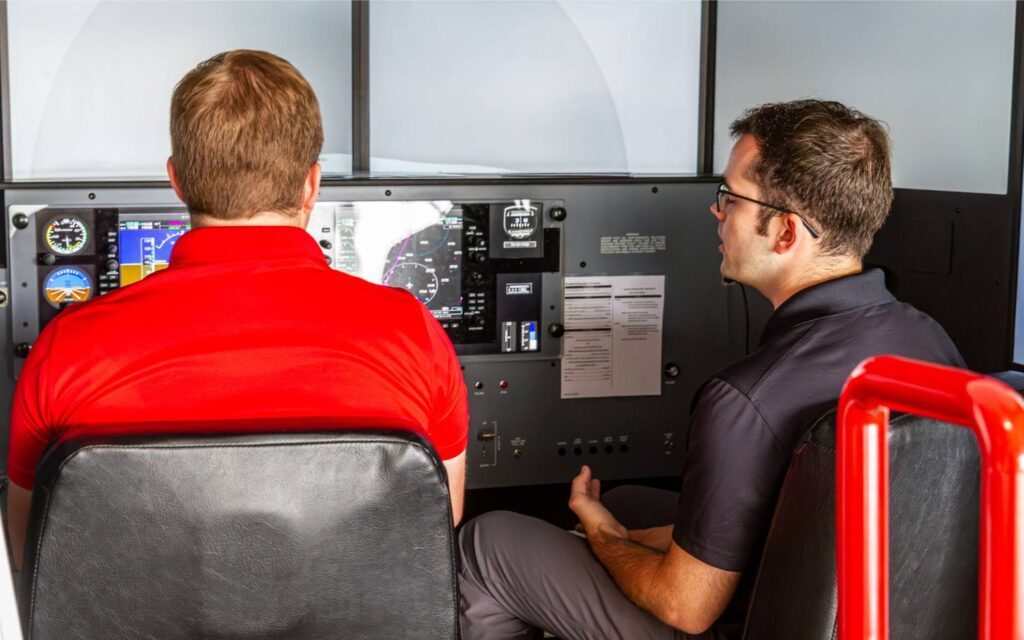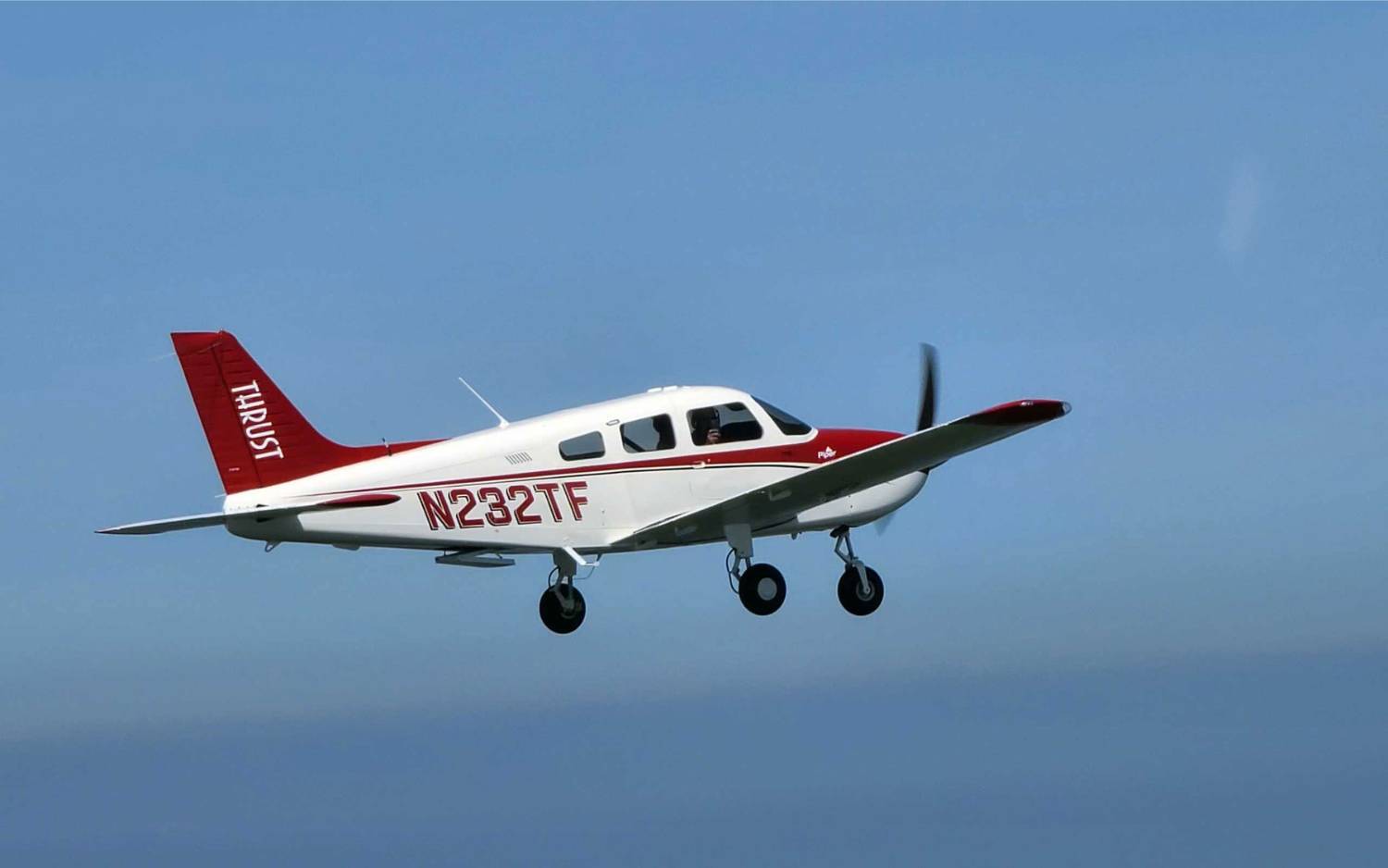What makes commercial training more demanding is the introduction of advanced maneuvers like accelerated stalls.
You’ll have to demonstrate your understanding of turning stalls for Private and Instrument training by completing shallow banked turns while performing power-on and power-off stalls.
But, during your Commercial training, you must take it to another level and complete an accelerated stall.
The accelerated stall demonstrates that the stall speed increases dramatically as the load factor increases. To demonstrate, you will induce a stall from a 45-degree banked turn.
Here’s a look at how to properly perform the accelerated stall to commercial standards and the importance of understanding the maneuver.
What Are Accelerated Stalls?
An accelerated stall is any stall that occurs at a speed higher than the published stalling airspeed, whether Vs or Vso.
Of course, those V-speeds are only valid in specific configurations, specific weights, and at 1 G. If you are flying at more than 1 G, you will reach the critical angle of attack at a higher airspeed than you would otherwise, and therefore the stall is accelerated.
For Commercial pilot and Flight Instructor airplane certification, applicants must be able to demonstrate an accelerated stall as a maneuver.
This is basically a stall entered from a steep, 45-degree turn.
When the aircraft is banked into a turn, the total lift of the wings is divided into two components: the vertical and horizontal components of lift.
The vertical component acts opposite weight, while the horizontal pulls the aircraft into the turn.
On the flip side, the airplane’s weight is constant, but the resultant force now also includes a force opposite the horizontal component of lift: the centrifugal force.
The takeaway is that the total resultant load is greater than the weight alone. It has increased in the form of load factor.
The load factor goes up as the angle of bank increases. Since the wings have to produce enough total lift to counteract it, stall speed also increases as the bank angle increases.

FAA Graphic: Pilot’s Handbook of Aeronautical Knowledge
The aerodynamics of turning flight is discussed in the FAA’s Pilot’s Handbook of Aeronautical Knowledge, Chapter 5: Aerodynamics of Flight.
Accelerated Stall Scenarios
You’ve been dealing with this increase in stall speed while turning since you first started doing maneuvers in your Private pilot training.
For example, you know that any turns must be kept as slow and shallow as possible during slow flight. And before you turn, you should increase speed slightly to ensure the increased load does not induce a stall.
You hopefully have also developed some habits to ensure that you do not come near a stall in dangerous places like the traffic pattern.
For example, how often has your instructor reminded you that turns inside the pattern should not exceed a 30-degree bank?
This helps make sure you keep any increases in load factor minimal when you are low and slow.
Outside the traffic pattern, another dangerous scenario is sometimes called the “moose-turn stall.”
In this situation, a pilot is flying low to get a good view of something on the ground, perhaps a moose, but also just as likely their friend’s house.
The pilot enters a steep turn to get a better view or take a photo, and they inadvertently induce an accelerated stall in the process.
At low altitudes, there is no time to recover.
Simply put, accelerated stalls should be near your mind anytime you roll the plane into a turn.

It generally can be ignored if you’re operating in the center of the flight envelope, with plenty of airspeed. But anytime the plane is near the margins, any extra load factor could induce a stall — or worse.
Here’s another fun example to ponder: extremely high-altitude aircraft.
Despite their fast true airspeed (TAS), these planes often operate in a narrow envelope between stalling and exceeding their maximum limits (Vmo/Mmo), a place sometimes referred to as Coffin Corner.
Any significant, sudden increases in load factor in this scenario could also induce an accelerated stall.
For example, the U-2 spyplane cruises at 70,000 feet and has only five knots of difference between a stall and its maximum Mach number. Turns here must be kept extremely shallow.
Performing the Accelerated Stalls Maneuver
Before commencing the maneuver, the pilot should be familiar with a few aircraft performance stats. Specifically, they need to know what Va (maneuvering speed) is given the plane’s loading.
As weight increases, Va goes down. Like steep turns, this maneuver should never be attempted at or above Va, as this could result in structural damage.
You should also have a rough idea of what the accelerated stall speed will be going into the maneuver.
Some airplane manufacturers provide a table that shows stalling speeds at various bank angles — check the Performance chapter of your POH/AFM. In lieu of that, it’s around 20 percent higher than the stall speed at 1 G when level.
Finally, an emphasis must be placed on maintaining coordinated flight with adequate rudder pressure throughout the maneuver.

Since accelerated stalls occur more rapidly than unaccelerated stalls, they can surprise the inexperienced pilot.
Any delay in recovery or failure to keep coordinated can result “in a spin or other departure from controlled flight.” (Airplane Flying Handbook)
Like steep turns, the maneuver should be entered at a safe altitude (completed no lower than 3,000 feet, per the ACS), and your clearing turns and pre-maneuver checklist should be completed.
The plane is then rolled into a 45-degree turn, left or right, but the power is left at the normal cruise setting (one that ensures you are below Va).
The elevator back pressure is increased to maintain altitude, but speed is bled off until indications of a stall appear. This may be buffetting or the horn.
At the first sign of an imminent stall, the angle of attack should be reduced (stick forward), the wings rolled to level, and power increased to increase airspeed.
In most cases, an airplane will stall similarly as it does at 1 G.
However, the indications of the stall may occur more rapidly and more pronounced.
While the maneuver may initially seem intimidating because it happens at such a high speed, its recovery is performed just like any other stall recovery.
The commercial standards for the maneuver skills are (taken from the FAA Commercial Pilot Airplane Airman Certification Standards, 2023):
- Clear the area
- Enter so it may be completed no lower than 3,000 feet AGL
- Establish the configuration specified by the examiner
- Set power appropriate to give you Va or a speed specified in the POH.
- Establish and maintain a coordinated turn in a 45º bank, increasing elevator back pressure smoothly and firmly until an impending stall is reached.
- Acknowledge the cues at the first indication of a stall (e.g., aircraft buffetting, stall horn, etc.)
- Execute a stall recovery in accordance with procedures set forth in the Pilot’s Operating Handbook (POH/AFM).
- Configure the airplane as recommended by the manufacturer, and accelerate to Vx or Vy
- Return to the altitude, heading, and airspeed specified by the evaluator.
Stalls and recovery techniques are covered in the FAA’s Airplane Flying Handbook, Chapter 5: Maintaining Aircraft Control, Upset Prevention and Recovery Training.

